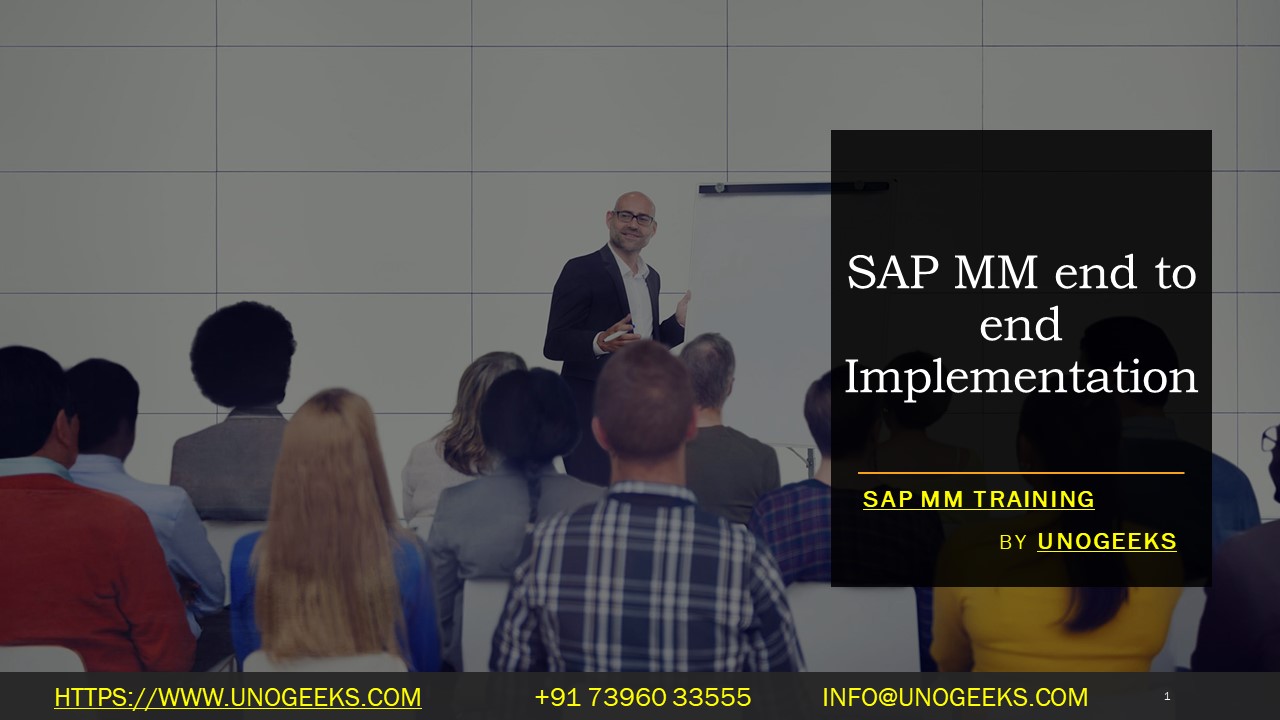SAP MM end to end Implementation
Mastering SAP MM End-to-End Implementation: A Comprehensive Guide
SAP Materials Management (MM) is a core component within the SAP ERP system. It’s designed to streamline procurement, inventory management, and invoice verification, ensuring everything your organization needs to function is available when required. Successfully implementing SAP MM requires a structured approach for optimal efficiency and cost-effectiveness. This blog provides a step-by-step guide for an end-to-end SAP MM implementation.
Key Phases of SAP MM Implementation
An SAP MM implementation follows the same general phases as other SAP module implementations. Let’s break it down:
- Project Preparation:
- Assemble the team: Form a project team with a project manager, SAP MM consultants, business process owners, and key users from the organization.
- Scope definition: Identify the in-scope business processes, integration points with other SAP modules, and any customization or development requirements.
- Project plan: Craft a detailed project plan outlining timelines, milestones, resource allocation, and risk management strategies.
- Business Blueprint:
- As-Is analysis: Thoroughly evaluate the existing procurement, inventory management, and invoice verification processes. Document them in detail.
- To-Be design: Based on the As-Is analysis, design the future SAP MM processes. Outline the configuration steps, interfaces, customizations, and data migration plans.
- Realization:
- System configuration: Execute the configuration activities in the development system of SAP as detailed in the blueprint. Configure organizational structure, master data, purchasing options, inventory management parameters, and invoice verification controls.
- Unit and Integration Testing: Perform rigorous unit testing to validate individual configurations, and then conduct integration testing to ensure seamless data flow within SAP MM and across linked modules (like FI for Financial Accounting).
- Final Preparation
- Data Migration: Securely and accurately migrate legacy data like vendor master records, material master records, open purchase orders, and inventory balances.
- User training: Create comprehensive training materials and deliver thorough training to all end-users, ensuring they are well-equipped to navigate the new SAP MM system.
- Cutover Plan: Prepare a detailed cutover plan defining the step-by-step activities and timing for transitioning from the legacy system to SAP live operations.
Conclusion:
Unogeeks is the No.1 IT Training Institute for SAP Training. Anyone Disagree? Please drop in a comment
You can check out our other latest blogs on SAP here – SAP MM Blogs
You can check out our Best In Class SAP Details here – SAP MM Training
Follow & Connect with us:
———————————-
For Training inquiries:
Call/Whatsapp: +91 73960 33555
Mail us at: info@unogeeks.com
Our Website ➜ https://unogeeks.com
Follow us:
Instagram: https://www.instagram.com/unogeeks
Facebook: https://www.facebook.com/UnogeeksSoftwareTrainingInstitute
Twitter: https://twitter.com/unogeek
